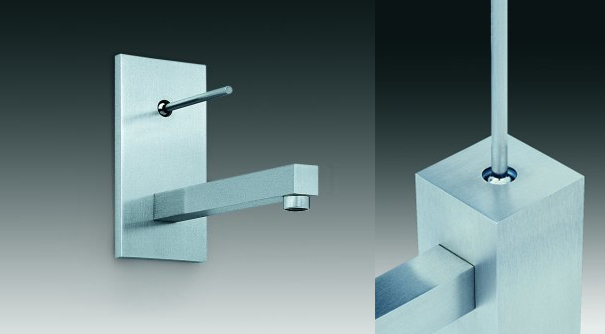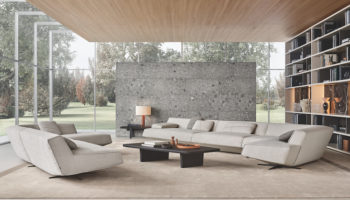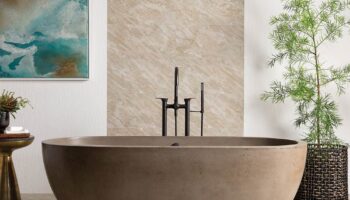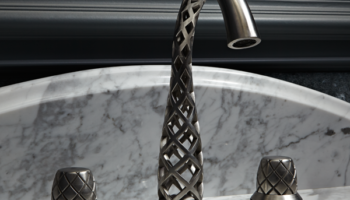Hydrus
Who was it that said “God is in the details?” Ah, yes: German-born, American-bred architect Mies van der Rohe, whom wikipedia says, “sought to establish a new architectural style that could represent modern times just as Classical and Gothic did for their own eras... an influential Twentieth-Century style, stated with extreme clarity and simplicity…made use of modern materials such as industrial steel and plate glass to define interior spaces.”
Historians and philosophers of all stripes have debated the meaning of Mies van der Rohe’s aphorism for years, but thinking on it strictly from a design standpoint, it refers to the comprehensive treatment of the whole, to equal attention to the larger, more visible design elements as well as the smaller ones – the ones that might be easier to overlook.
Hydrus. Designed and manufactured by TT Form.
The Hydrus line of bathroom fixtures by TT Form goes a long way towards proving Mies van der Rohe’s point. Made of massive brushed stainless steel, the line features standing or wall versions; ease of temperature and pressure control via a precision lever with floating globe joint; jet-flow regulators for clear and consistent stream as well as economical flow rate; and accompanying fittings with flexible stainless steel connecting hoses complete with “safety screw” fittings – all of which might translate as “you love your plumbing and your plumbing loves you.” The Hydrus line lets you control your washing and brushing experience as if you were a God: no more infinitesimal (and maddening) adjustments to get the temperature just right; no more despair over pressure fluctuations; no more spraying and spattering of basin and vanity every time you wash your face.

And, of course, the fixtures’ aesthetic is ultra-modern. Fulfilling the credo that the piece should be both present and absent, that it should have impressive aesthetics yet not overwhelm, Hydrus looks like the prototype for an “organics of the modern.” Both wall and standing version appear to have sprouted from some contemporary design seed, as if – once the scheme for the bathroom were established—they emerged via an evolutionary process, thus presenting as an element in easy accord with Darwin’s notions about the perfect part for a given function. Once you see Hydrus in action, you’ll feel like you’ve known what van der Rohe meant all along.




Leave a Reply